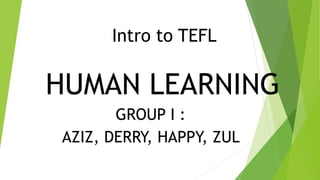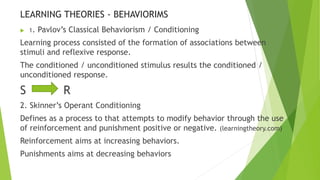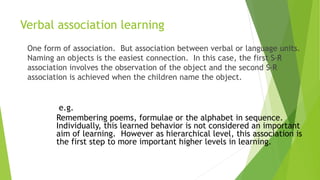This document provides an overview of several topics related to teaching English as a foreign language (TEFL), including human learning, learning theories, and popular language teaching methods from the 1970s. It discusses concepts such as learning vs. training, behaviorism, cognitivism, constructivism, aptitude vs. intelligence, and Gagne's types of learning. Popular 1970s methods summarized are community language learning, suggestopedia, the silent way, total physical response, and the natural approach.





























